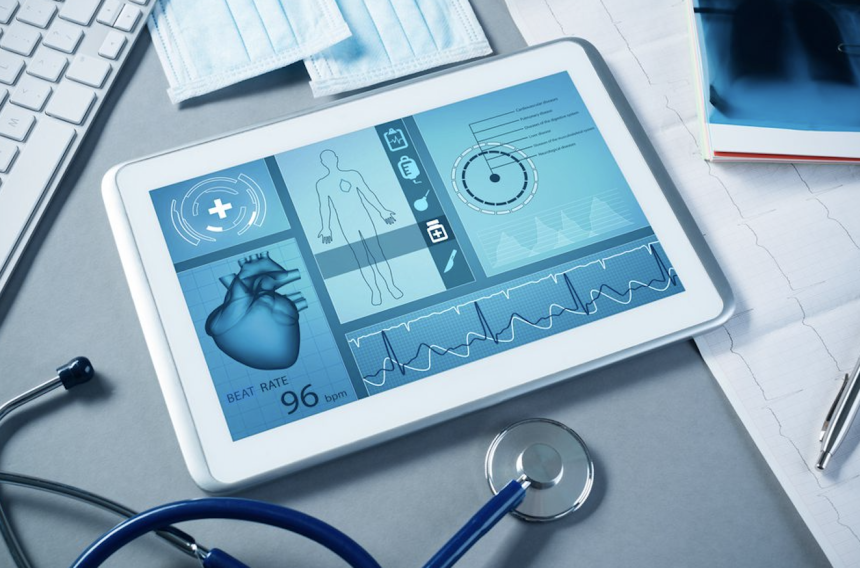People use digital solutions every day as they make life more convenient. The healthcare domain is no exception. The global digital health market was rated $175 billion in 2019 and is expected to reach almost $660 billion in 2025. Medical providers are ready to purchase the tools that make their routine more productive and less time-consuming. In this post, healthtech businesses read about the latest digital tendencies in the medical domain.
Legacy application modernization
As a healthtech expert, Dmitry Baraishuk mentions in the article about legacy application modernization, not every company that went down the road of digitalization succeeded. The reasons are hidden in the skeptical view towards innovations and the fear of difficulties. Both things are completely addressable.
In the condition of a steadily evolving economy, accepting changes is inevitable. Relying on obsolete software might cause problems for businesses with integration, attracting new clients, and lacking timely updates. Therefore, legacy app modernization helps to deal with those issues.
Modernization might imply rehosting, refactoring, replatforming, re-architecting, or rebuilding. All those actions have pros and cons regarding business processes, investments, and risks. Rehosting, also known as ‘lift-and-shift’ migration, is said to be the least sophisticated. All types of modernization have their pros and cons.
Developers from the Belitsoft company know how to convert .NET Framework to .NET Core in their clients’ products with the best performance results. A healthtech business realized that the .NET Framework was insufficient for adapting to their clients’ systems. That is why they decided to migrate to the .NET Core. As a result, the business received upgraded cross-platform software that brought them a broader target audience. Additionally, the company partnered with Belitsoft outsource developers, who reinforced the internal IT department.
The power of data
The quality of data plays a vital role in the decision-making process. It influences patient care and administrative issues, such as hiring competent experts or upskilling the staff. Data is said to be the reason and the consequence of digital transformation. Digital transformations happen inside a business with the use of internal data. At the same time, the implementation of new tools produces new arrays of data that should be analyzed and applied.
Electronic health records (EHRs) contain the data that allows for careful diagnosis of the patients. Physicians use the information from the EHRs to examine health histories, compare similar clinical cases, and analyze lab results. Patient X-rays, MRIs, cardiograms, etc. are carefully stored in the EHRs. If a patient decides to switch to another medical provider, there will be no issues with accessing their medical data.
Patients’ platforms and front-door solutions also work on data. According to Gartner experts, 20% of medical organizations will move from EHRs to front-door solutions by 2026. Those systems use the EHR data and integrate it into the functionality of making appointments, tracking lab results, and sharing the information with physicians. This is a modern tendency that engages patients’ proactive participation in healthcare.
Automated processes
As the American Medical Association found out, only half of the 12,400 interviewed physicians managed to take three weeks of vacation during the twelve months in 2023. 5% of the respondents took no vacation at all. At the same time, even for those on vacation, it is not the period totally off work. Many physicians are forced to check work emails and finalize EHR records instead of unwinding.
Automation is able to take part of the staff’s duties off their shoulders. Thus, converting speech to medical records improves the diagnosis as clinicians do not have to type in a computer simultaneously while interviewing a patient. Then, doctors can check the notes and supplement them with relevant lab results or images. As a result, a complete health record is ready to be submitted to the EHR. The following technological giants are currently aiding medical providers in automating their paperwork by applying generative AI:
- Microsoft Nuance
- AWS HealthScribe
- Google Med-PaLM
- Oracle Cerner Enviza
Automation also improves internal workflows for hospital staff. For example, call routing automatically transfers calls to the required departments in the clinic. Bots and virtual assistants help patients on the phone to find out the working hours of the medical center, make an appointment, or check the lab results status. Patient platforms allow patients to select a slot in their physician’s schedule. Special programs analyze the severity of new patients’ symptoms and organize the triage.
Artificial intelligence
Modern digital transformation cannot leave the possibilities of AI unnoticed. ChatGPT has changed the way people interact with machines. There is no surprise that generative AI is widely used in healthcare, affecting almost every medical sphere.
- Medical documentation: machine learning and natural language processing (NLP) transform the speech in the written text. As mentioned earlier, this can improve the doctor-patient interactions. Besides that doctors use those tools to take minutes of medical discussions and concilium. The optical character recognition technology (OCR) helps clinicians to extract text from images. It results in faster test interpretation and converting patients’ handwritten registration forms into medical cards.
- Medical billing: AI and medical coders work in a team. The software explores the datasets of medical manipulations and provides medical billers with respective codes. As a result, human experts increase their working speed and minimize errors.
- Predictive medicine: the algorithms of AI-powered software examine the information about people’s health conditions, location, climate, socioeconomic factors, race, gender, etc. Then, scientists find dependencies among those factors and use the results of such analysis in their research. It helps to predict outbreaks of infectious diseases, like dengue in the Dominican Republic, and save lives.
- Drug discovery: scientists need up to nine years to develop and introduce a new drug. AI tools can make the process faster. Trained programs help to find suitable candidates for clinical trials and monitor the performance of new medicine by analyzing health tests.
Final thoughts
To sum up, digital transformation in healthcare includes app modernization, data-driven tools, automation, and AI. Healthtech businesses use different approaches in their products. However, implementing new technologies in a medical provider requires a deep analysis of the current situation and an understanding of the goals that this provider wishes to achieve. Careful planning of the IT improvements brings organizations satisfied customers and increased profit.
Lynn Martelli is an editor at Readability. She received her MFA in Creative Writing from Antioch University and has worked as an editor for over 10 years. Lynn has edited a wide variety of books, including fiction, non-fiction, memoirs, and more. In her free time, Lynn enjoys reading, writing, and spending time with her family and friends.















